PLOT:
After narrowly escaping death from a terrible creature attacking his village, Ashitaku finds his arm cursed by the monster's touch. He is soon banished from his home, and leaves to the South to discover what has been the corrupting the Gods. He reaches Tataraba, an iron worker's village, and discovers the leader Eboshi has been developing weapons to fend off the animal Gods in their search for technological advancement. Ashitaka is angered, and fends off the villagers when Eboshi is attacked by San, a young girl raised by the Wolf God Moro as a "spirit princess". San and Ashitaka slowly develop trust and have to work together to stop Eboshi and her men from attacking the spirit of the forest.
REVIEW:
"Wanting all between Heaven and Hell is the human condition" - Jigo.
Man's uneasy relationship with nature has fueled the imagination of filmmakers for decades. It's even been mined by Hayao Miyazaki in films previous to Princess Mononoke, but rarely has the struggle been presented with such unfiltered beauty and absolute wonder. Do not mistake this film for another Ferngully. While the characters in the film exist in an altered reality where animal Gods exist with humans, these are not cartoon characters. They are shaded, living being who exist in the morally ambiguous areas in which few animated films (and films in general) are willing to tread.
While certainly designed to appeal to adolescents, there can be no doubt that it holds equal excitement for adults. Even aside from the eye popping visuals, the story is exquisitely paced and features enough action to satiate both rambunctious youngsters and skittish adults. However, it also features serious ruminations on humanitie's affect on the environment, the morality of greed, feminism, and the (sometimes literal) healing power of love. Similarly to the recent WALL-E, Princess Mononoke balances some heavy themes with limitless inventiveness and imagination.
The animation is fluid and detailed, and shies away from the exaggerated emotions (and eyeballs) that typify the stereotypical view of anime. Little details, such as the way that Ashitaku strings his bow, or the rattle of the Kodamas' heads, are beautifully realized and show Miyazaki's obsessive handiwork. This was the first Miyazaki filmin which the animation was assisted by computers, but the director uses his typical restraint and the viewer is never taken out of the film by dated visual tricks.
Much was made of the film's dubbing upon its release in 1997. Adapted by Neil Gaiman and featuring the vocal talents of Billy Crudup (Ashitaka), Claire Danes (San), Billy Bob Thornton (Jigo), Minnie Driver (Eboshi), Gillian Anderson (Moro) and Jada Pinkett Smith (Toki), it truly is a superior dubbing job (particularly for those who have suffered through some awful dubbing of Miyazaki films in the past), though hardly perfect. The translation is fine, but some of the performances, particularly Billy Bob Thornton and Jada Pinkett Smith, stick out unpleasantly. It's well done, but the original Japanese track is the way to go, and kudos to Buena Vista entertainment for eventually bending to the outcry of fans and including the original audio and subtitles.
The Buena Vista Entertainment DVD of Princess Mononoke features a terrific 1.85:1 transfer that, while featuring a few scratches here and there, provides some tremendous, rich detail in the lush natural environments on display. Joe Hisaishi's memorable music sounds terrific on the Dolby 5.1 soundtrack, and both the original Japanese audio and the American dub are clear and easy to understand.
Unfortunately, the DVD is rather short on extra features. While the inclusion of the original audio is the best extra of all, the only other extras are the film's trailer and a five minute featurette that focuses almost entirely on the American voice actors. It's unfortunate that more attention wasn't paid to Miyazaki's contribution.
A masterpiece showcasing Hayao Miyazaki at the very height of his abilities, Princess Mononoke may represent the peak of traditional hand drawn animation immediately before computer animation began to replace them in the North American consciousness. Full of scenes of wonder and imagination impossible to recreate in live action, it's a marvel of story and technique that should be required viewing for anyone interested in animation or any parents who wish to introduce their (mature) children to Miyazaki's catalogue of wonderful films.

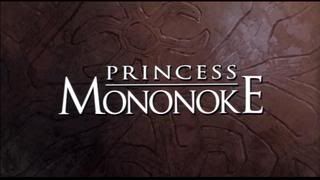
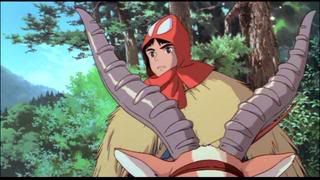
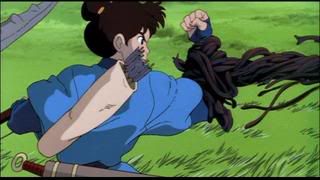
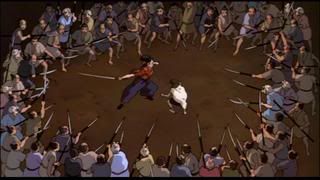
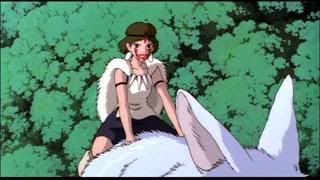
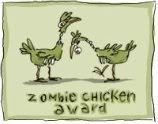








3 comments:
Man, I love Princess Mononoke. I like that it's a world almost totally without villains. Sure, the "monk" is probably a villain, but he's definitely more motivated by greed than pure "cartoonish" evil. And Lady Eboshi is almost Christ-like: friend 'o the hooker, tender of lepers, etc. Despite being a fantasy cartoon, I think it has a pretty mature view of man vs. nature, with neither being essentially good or evil. I also especially like the Ashitaka, though set up as a sort of action hero, is the one figure trying to find balance, and whose quest is to "see with eyes unclouded by hatred."
Funny thing: I've never watched it with the original Japanese. It actually never occurred to me until recently. It's really Gillian Anderson's voice that bugs me, anyhow--she's not especially believable as a giant wolf.
Also, great write up.
I thought Gillian Anderson was ok, at least tolerable since it was a rather small part, but her voice is certainly at odds with the voice acting in the Japanese version. The speaking of the animals in general is always presented in a sort of ethereal way, with their mouths moving with little connection to the actual words coming out, as if the animal language itself was being translated. But Moro has a deep growling voice that is far removed from Anderson's lilt.
I think the intentions of the American dub were really positive, and that wins points with me.
Post a Comment